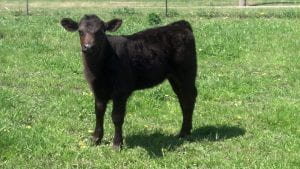– Dr. Michelle Arnold, DVM (Ruminant Extension Veterinarian, UKVDL), JD Green, PhD (Extension Professor [Weed Scientist], UK Plant and Soil Sciences Department), Megan Romano, DVM (Clinical Veterinary Toxicologist, UKVDL)
Poisonous plants can be responsible for considerable losses in livestock although many cases go unrecognized and undiagnosed due to a lack of knowledge of which plants are dangerous and the wide range of signs that may be observed after consumption. The risk posed to animals by a particular plant depends on a variety of factors, including how much of the plant is consumed and over what time period; the stage or maturity of plant growth; which parts of the plant are eaten; whether the plant is green or dried; and the animal’s age, species, and in some cases breed. Most weeds are tough and unpalatable, and cattle will not consume them unless baled in hay or the pasture is limited due to drought or overgrazing and there is little else to consume.
If cattle on pasture suddenly develop symptoms such as diarrhea, salivation or slobbering, muscle weakness, trembling, incoordination, staggering, collapse, difficulty breathing, or rapid death, then poisoning due to plants or any number of other toxicants should be high on the list of possible causes.

Perilla mint (Perilla frutescens), aka perilla, purple mint, mint weed, beefsteak plant, and wild coleus.
Oftentimes poisonous plants affect just a few cattle in the herd. Cases occur more often shortly after animals are moved to a new field. The severity of signs primarily depends on how much of the plant or other toxicant is consumed over what time period (the rate of consumption). If plant poisoning in livestock is suspected, the first thing to do is call a veterinarian, since prompt treatment is critical to the animal’s chances of survival. Until the veterinarian arrives, keep the affected animal quiet and confined where a physical examination can be performed, and treatment given. Other animals should be moved as carefully as possible from the pasture where the suspected poisoning occurred until the cause of illness has been determined. Prevention involves learning to recognize poisonous plants, implementing effective weed control and pasture improvement, and offering supplemental forage or feed when pasture is limited so cattle are not forced to graze toxic weeds. A common summer weed in Kentucky that can cause problems in livestock is perilla mint (Perilla frutescens), also known as Continue reading Start Looking Now for Perilla Mint →






